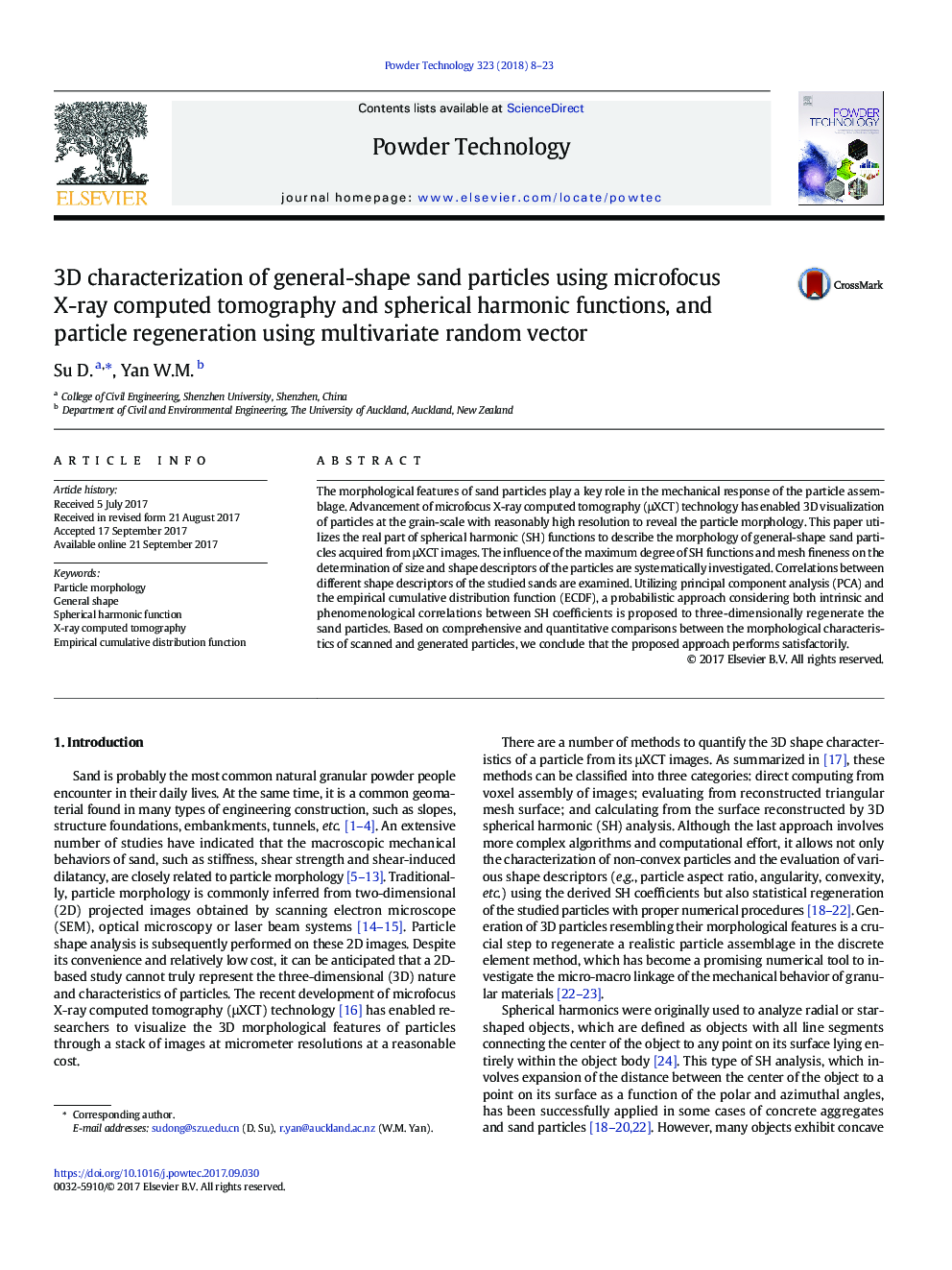| کد مقاله | کد نشریه | سال انتشار | مقاله انگلیسی | نسخه تمام متن |
|---|---|---|---|---|
| 4914748 | 1427718 | 2018 | 16 صفحه PDF | دانلود رایگان |

- Real forms of spherical harmonic functions are employed to reconstruct general-shape particles.
- Influence of the maximum degree of SH functions and mesh fineness are systematically investigated.
- A probabilistic approach based on PCA and ECDF is proposed to regenerate particles.
- Both intrinsic and phenomenological correlations between SH coefficients are considered.
- Virtual and real particles bear similar correlations between different shape descriptors.
The morphological features of sand particles play a key role in the mechanical response of the particle assemblage. Advancement of microfocus X-ray computed tomography (μXCT) technology has enabled 3D visualization of particles at the grain-scale with reasonably high resolution to reveal the particle morphology. This paper utilizes the real part of spherical harmonic (SH) functions to describe the morphology of general-shape sand particles acquired from μXCT images. The influence of the maximum degree of SH functions and mesh fineness on the determination of size and shape descriptors of the particles are systematically investigated. Correlations between different shape descriptors of the studied sands are examined. Utilizing principal component analysis (PCA) and the empirical cumulative distribution function (ECDF), a probabilistic approach considering both intrinsic and phenomenological correlations between SH coefficients is proposed to three-dimensionally regenerate the sand particles. Based on comprehensive and quantitative comparisons between the morphological characteristics of scanned and generated particles, we conclude that the proposed approach performs satisfactorily.
164
Journal: Powder Technology - Volume 323, 1 January 2018, Pages 8-23